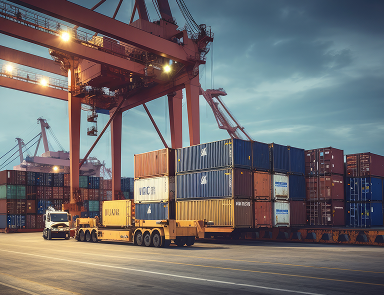In the oil and gas industry, logistics play a critical role in maintaining profitability, safety, and operational efficiency. Choosing between railcars and barges for transporting commodities such as crude oil, LNG, refined products, or petrochemicals can significantly impact delivery timelines, safety standards, and cost structures.
1. Delivery Timelines
When time is of the essence, rail transport often offers the upper hand. Railcars provide flexible routing and faster turnaround times, particularly for inland deliveries and regions with limited waterway access. They can be scheduled more frequently and provide direct routes to refineries, terminals, or end users.
On the other hand, barges typically operate on slower schedules but are ideal for bulk transport over long distances via navigable rivers and coastal waterways. While slower, barges excel in volume capacity, making them cost-effective for high-volume, non-urgent shipments.
2. Safety Considerations
Both rail and barge transport come with safety protocols and risks. Railcars are vulnerable to derailments, especially in high-traffic or mountainous areas, and require stringent operational oversight. However, advances in railcar design and safety regulation have greatly improved risk mitigation.
Barges, while generally considered safer due to slower speeds and fewer handling requirements, face their own challenges—such as weather disruptions, navigational hazards, and limited port accessibility. However, they also reduce the risk of spills due to larger, single-unit containment systems.
3. Cost Implications
Barge transport is typically more cost-effective for large, non-urgent shipments. The cost per barrel tends to be lower due to higher load capacity and reduced fuel consumption per unit. Barges are ideal when transporting along major waterways like the Mississippi River or Gulf Coast.
Conversely, railcars incur higher costs per unit but offer unmatched reach and scheduling flexibility. Rail is often the preferred method when access to water routes is limited or when time-sensitive delivery is a priority.
4. Environmental Impact
From an environmental perspective, barges have a lower carbon footprint per ton-mile compared to rail. Their efficiency in moving massive volumes with less fuel per unit makes them attractive for sustainability-focused logistics strategies. Rail, while still efficient, produces higher emissions and requires additional infrastructure investment.
Making the Right Choice
Choosing between railcars and barges ultimately depends on multiple factors:
- Delivery urgency
- Destination accessibility
- Volume of goods
- Safety priorities
- Budget constraints
Many companies in the energy sector adopt a blended logistics strategy, using rail for quick-response needs and barges for economical long-haul shipments. At PLX, we help clients evaluate these options to develop transportation solutions that align with both operational requirements and long-term business goals.
Conclusion:
The choice between railcars and barges is not one-size-fits-all. By weighing the trade-offs in speed, safety, and cost, energy companies can make informed decisions that optimize performance across the supply chain.


